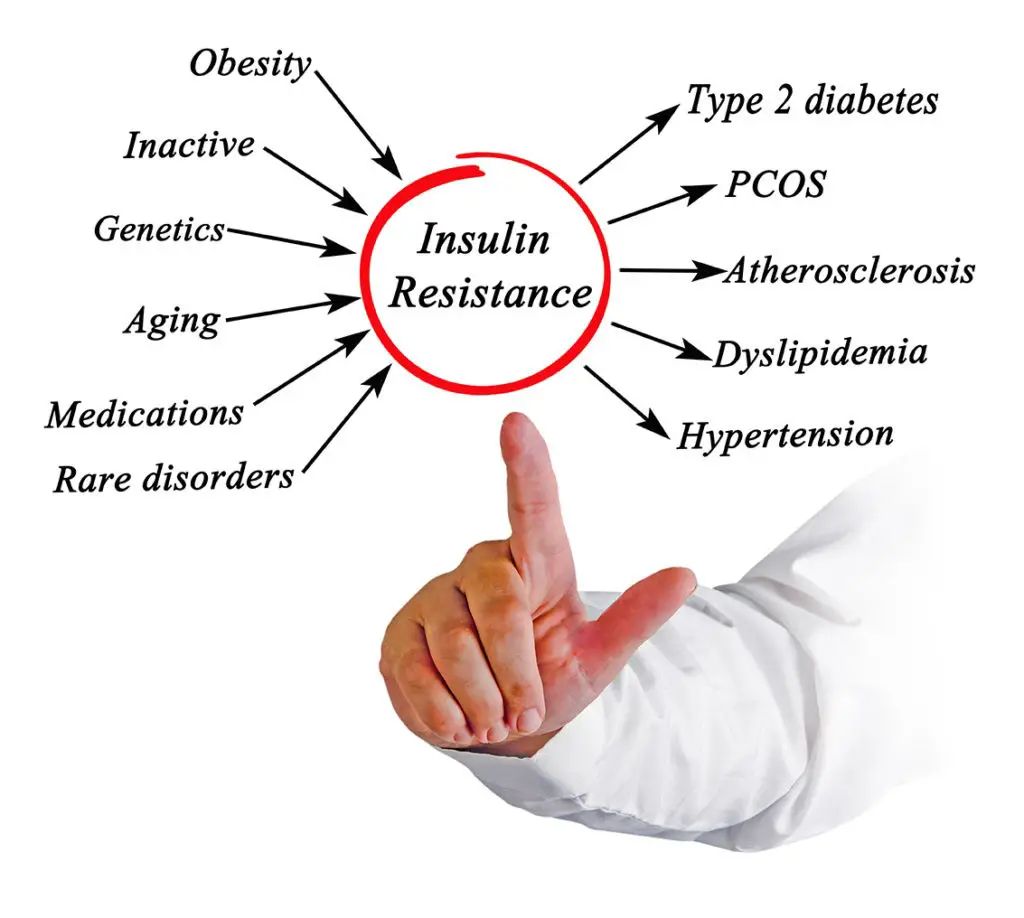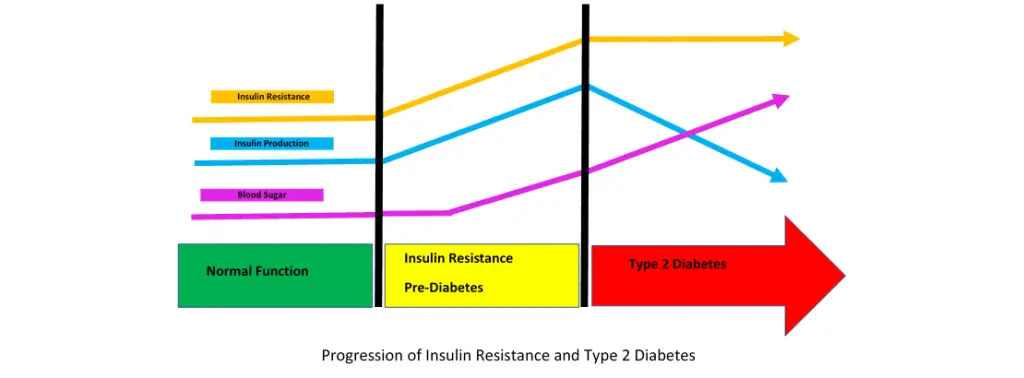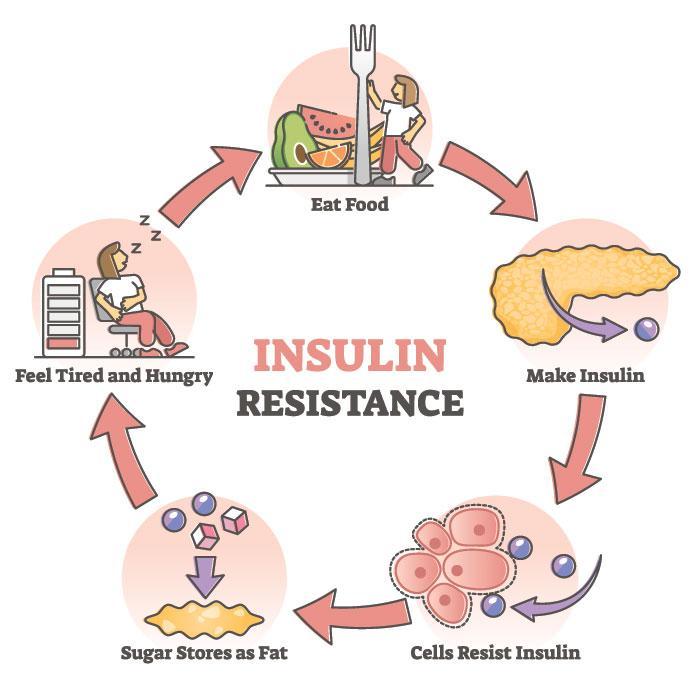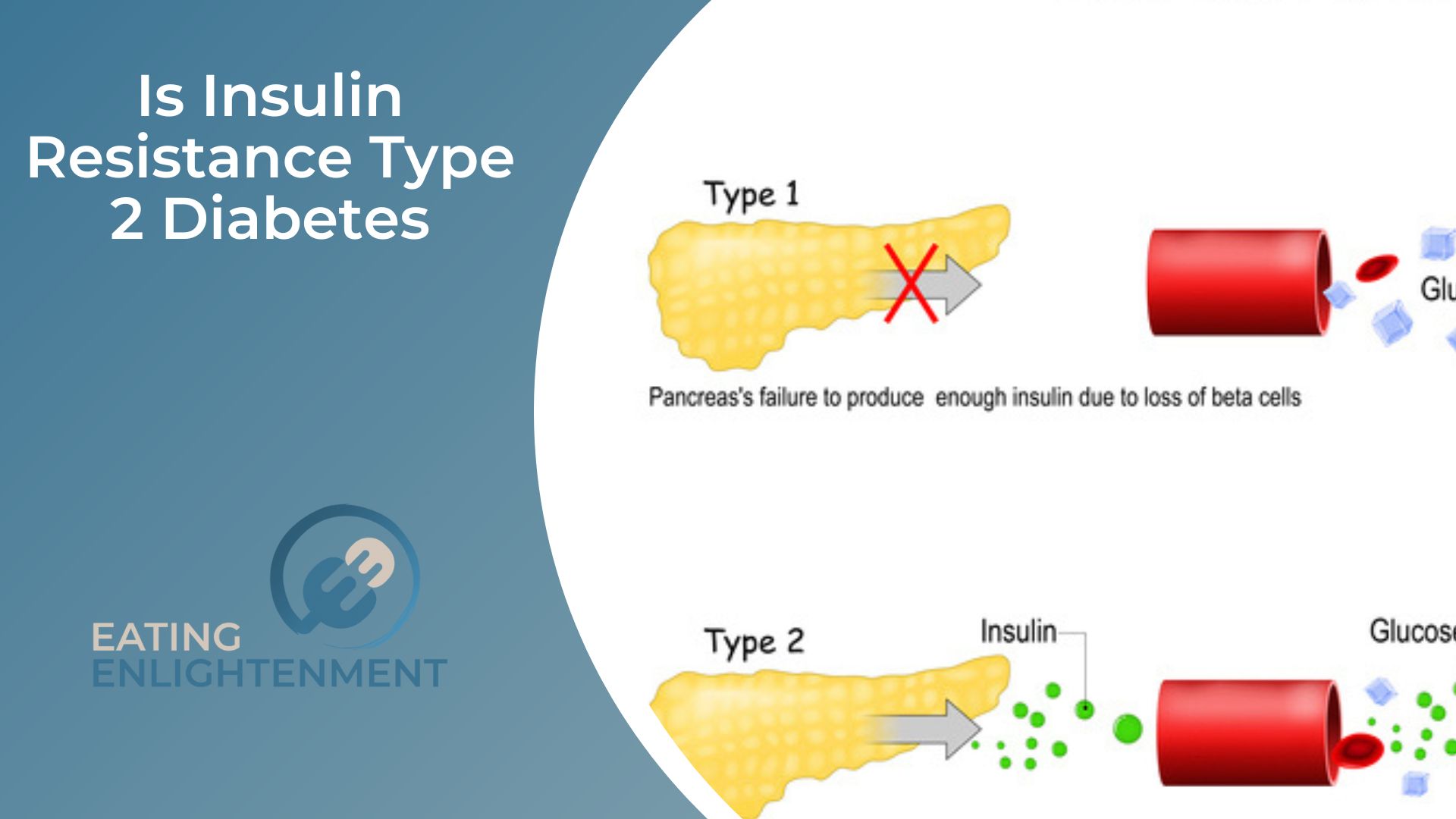You may have heard the term “insulin resistance” before, but you may not be sure what it means. Is insulin resistance type 2 diabetes? What are the symptoms?
And most importantly, what can you do to treat it such as supplements for insulin resistance? In this blog post, we will answer all of these questions and more.
We will discuss what insulin resistance is, the symptoms of insulin resistance and type 2 diabetes, and how to treat both conditions.
How do doctors diagnose insulin resistance and prediabetes?

Doctors will usually diagnose insulin resistance and prediabetes through a combination of tests. The most commonly used method is the fasting plasma glucose (FPG) test, which measures your blood sugar after an overnight fast.
This can be done in conjunction with a two-hour glucose tolerance test (OGTT) or a glycated hemoglobin A1C (HbA1c).
The FPG test measures the amount of glucose in your blood after you have gone without food for at least 8 hours – it is used to diagnose diabetes.
An FPG result of 126mg/dl or higher indicates that you have diabetes, while a reading between 100-125mg/dl suggests prediabetes or insulin resistance.
The OGTT, on the other hand, shows how well your body processes glucose over time. During this test, you will be given a sugary drink and then asked to fast for two hours before having your blood sugar measured again.
If your blood sugar remains high after 2 hours, this could indicate either prediabetes or diabetes. Results from this test are usually given as an OGTT value of 140mg/dl or higher indicating prediabetes or diabetes.
Finally, HbA1c testing looks at the percentage of sugar attached to red blood cells over time and is often used to monitor diabetes treatment progress.
When diagnosing pre-diabetic states, results from an HbA1c test may indicate an elevated level if it reaches 5.7% or higher – this will usually be accompanied by a positive result on either the FPG or OGTT tests as well.
In addition to these diagnostic tests, doctors may also take into account other risk factors such as family history and lifestyle when considering whether someone has insulin resistance or prediabetes.
It is important to note that all of these tests should be discussed with your doctor before undergoing any treatment plan for these conditions.
How can I prevent or reverse insulin resistance and prediabetes?
One of the best ways to prevent or reverse insulin resistance and prediabetes is through lifestyle changes.
- These can include eating a healthy diet that is low in refined carbohydrates and sugar, exercising regularly, and managing stress levels.
- Eating a diet rich in fresh fruits, vegetables, lean proteins, whole grains, and healthy fats can help to reduce insulin resistance and improve glucose tolerance.
- Exercise has also been shown to help improve insulin sensitivity by reducing inflammation and improving glucose metabolism. Getting at least 30 minutes of aerobic activity most days of the week is recommended for optimal health.
In addition to these lifestyle changes, some medications may also be prescribed to help manage blood sugar levels and prevent progression from prediabetes to full-blown type 2 diabetes.
Metformin is the most commonly used medication for this purpose as it has been found to reduce fasting plasma glucose levels and increase insulin sensitivity in people with prediabetes or high risk of developing diabetes.
Other drugs such as thiazolidinediones (TZDs) may also be prescribed if metformin isn’t enough to control blood sugar levels.
Research suggests that certain supplements such as chromium picolinate or alpha-lipoic acid may also play a role in improving glucose tolerance and decreasing insulin resistance.
However, it is important to note that such supplements should only be taken under the guidance of a healthcare provider as some may interact with other medications or cause side effects when taken in large doses or over long periods of time.
Overall, making lifestyle changes such as eating a healthy diet, getting regular exercise, managing stress levels, and taking any prescribed medications can go a long way towards preventing or reversing insulin resistance and prediabetes.
It is important for people who are at risk for developing diabetes or those who already have it to speak with their doctor before starting any new regimen.
How Insulin Resistance Progresses to Type 2 Diabetes?

Insulin resistance is a condition where the body produces insulin but does not respond to it normally, resulting in high levels of glucose in the blood.
This can eventually lead to type 2 diabetes if left untreated. In type 2 diabetes, the body still produces some insulin, but it is not enough to control blood sugar levels and glucose accumulates in the bloodstream instead of being taken up by cells for energy.
The exact cause of insulin resistance is unknown, but there are several risk factors that have been linked to its development.
- obesity
- physical inactivity
- a family history of diabetes
- certain medications such as steroids or antipsychotics
Insulin resistance can also be caused by certain medical conditions such as polycystic ovary syndrome (PCOS) or due to inflammation from chronic stress or infection.
When someone has insulin resistance, their pancreas may compensate by producing more insulin than usual which can help normalize blood sugar levels temporarily.
However, if this continues over time, beta cells in the pancreas may become impaired and eventually unable to produce enough insulin to keep up with demand.
At this point, blood sugar levels remain elevated which can lead to damage of other organs and tissues throughout the body. If left untreated individuals may develop complications like kidney disease or eye damage due to high blood sugar levels over time leading them into type 2 diabetes.
Fortunately, lifestyle changes such as eating a healthy diet with plenty of vegetables and whole grains while limiting refined carbohydrates and added sugars can help reduce risk factors associated with developing insulin resistance.
Regular exercise helps too as it improves muscle sensitivity to insulin and promotes weight loss if needed which further reduces risk for developing type 2 diabetes down the line.
Finally, regular monitoring of blood sugar levels is important so that any abnormal patterns can be addressed quickly before they progress into full-blown diabetes.
Symptoms of Insulin Resistance

The most common symptom of insulin resistance is an elevated level of glucose in the blood. This can be detected through a fasting glucose test or an oral glucose tolerance test, which measure the amount of glucose present in the blood at different points throughout the day.
Other symptoms include weight gain and difficulty losing weight, fatigue, increased hunger/thirst, and frequent urination. In some cases, there may also be skin darkening in areas like the back of the neck, armpits, elbows, knees and knuckles.
This condition is known as acanthosis nigricans and is believed to be caused by an increase in insulin levels due to insulin resistance.
Long-term complications from insulin resistance include type 2 diabetes, heart disease and stroke. It is important therefore to take steps to reduce risk factors associated with this condition such as maintaining a healthy body weight by eating a balanced diet and getting regular exercise.
Additionally, reducing stress levels can help improve insulin sensitivity and reduce any inflammation that may contribute to further damage down the line.
Finally, monitoring sugar levels regularly is key for catching any abnormalities early on before they progress into full-blown diabetes or other complications.
The prevalence of prediabetes?
According to the CDC, prediabetes affects an estimated 88 million people in the United States, or approximately 1 in 3 American adults. This number is expected to rise as the population ages and becomes more sedentary and obese.
Prediabetes is defined as having a fasting glucose level between 100-125 mg/dl and/or an A1C of 5.7-6.4%. People with prediabetes have a higher risk of developing type 2 diabetes, heart disease, stroke, and other long-term complications.
Interestingly, research suggests that up to 70% of people with prediabetes can reverse their condition with lifestyle modifications such as diet and exercise.
The prevalence of prediabetes increases sharply with age, affecting nearly one in two adults aged 65 or older, according to the Centers for Disease Control and Prevention.
Additionally, people who are overweight or obese are at greater risk for developing prediabetes than those of normal weight; estimates suggest that around 80% of individuals with prediabetes are overweight or obese.
Other risk factors include having a family history of diabetes, being physically inactive, having high blood pressure or abnormal cholesterol levels, being from certain ethnic backgrounds such as Hispanic American or African American populations, and having gestational diabetes during pregnancy.
Though the prevalence of prediabetes is concerning due to its potential for leading to type 2 diabetes if left untreated, there is good news: lifestyle changes have been shown to reduce the risk of progressing from prediabetes to type 2 diabetes by 58%.
Making small adjustments like eating healthier meals on a regular basis and exercising regularly can go a long way in helping people manage their glucose levels over time.
Conclusion
Insulin resistance is a serious condition that can lead to long-term complications such as type 2 diabetes, heart disease and stroke.
It affects an estimated 88 million people in the United States, with the prevalence increasing sharply with age and weight.
Fortunately, lifestyle changes such as eating a balanced diet and exercising regularly have been shown to help blood glucose levels and reduce risk of developing full-blown diabetes from prediabetes by 58%.
Monitoring blood sugar levels regularly is key for catching any abnormalities early on before insulin resistance develops into something more serious.
With proactive management, it’s possible to greatly reduce the risk of developing any of these long-term complications associated with insulin resistance.



